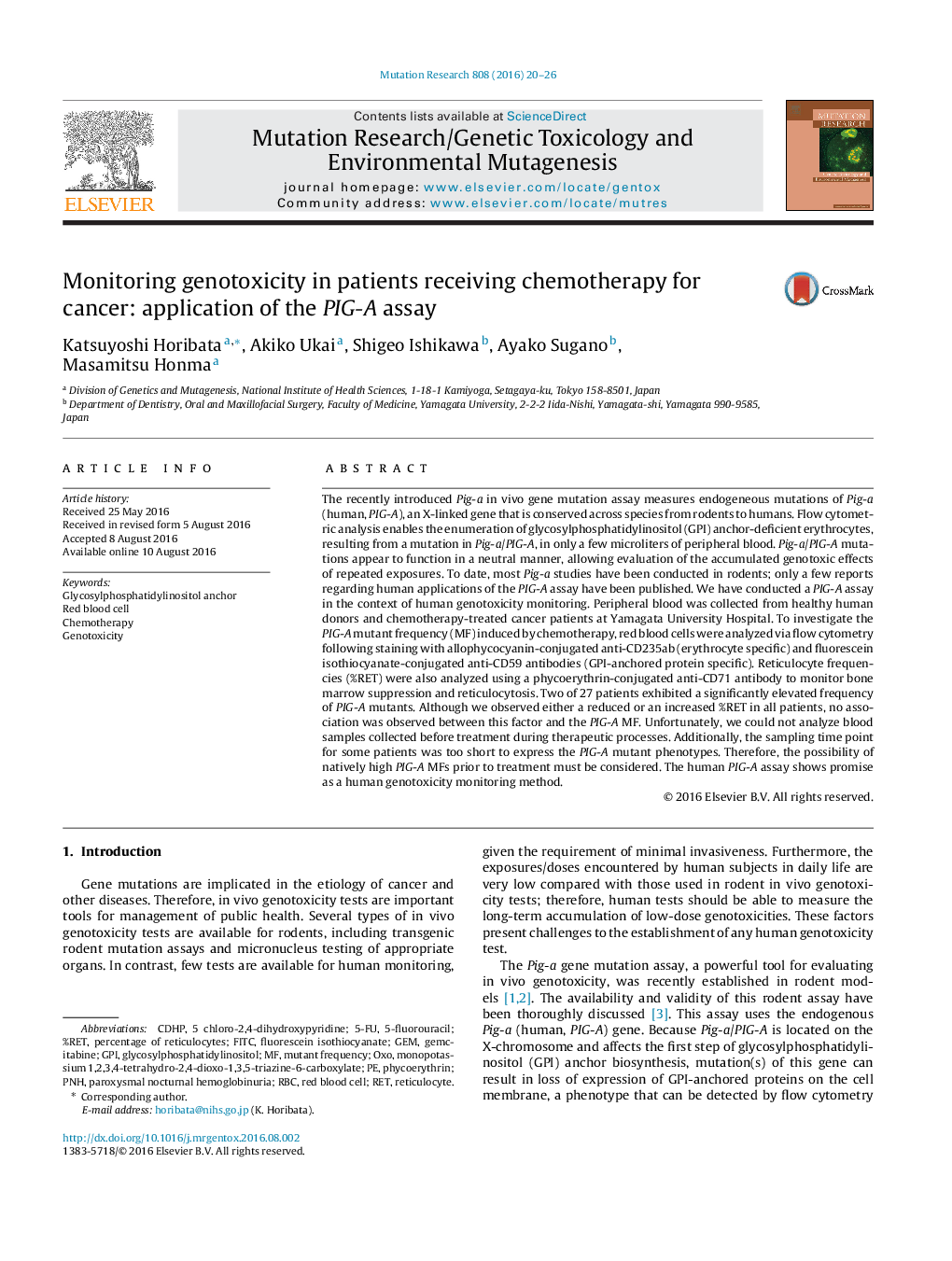| Article ID | Journal | Published Year | Pages | File Type |
|---|---|---|---|---|
| 2147789 | Mutation Research/Genetic Toxicology and Environmental Mutagenesis | 2016 | 7 Pages |
•A human PIG-A assay was conducted.•The human PIG-A assay allows minimally invasive human genotoxic monitoring.•Blood samples collected from patients with cancer receiving chemotherapy were analyzed.•The human PIG-A assay could detect strong chemotherapy-induced genotoxicity.•The human PIG-A assay could detect cumulative genotoxicity.
The recently introduced Pig-a in vivo gene mutation assay measures endogeneous mutations of Pig-a (human, PIG-A), an X-linked gene that is conserved across species from rodents to humans. Flow cytometric analysis enables the enumeration of glycosylphosphatidylinositol (GPI) anchor-deficient erythrocytes, resulting from a mutation in Pig-a/PIG-A, in only a few microliters of peripheral blood. Pig-a/PIG-A mutations appear to function in a neutral manner, allowing evaluation of the accumulated genotoxic effects of repeated exposures. To date, most Pig-a studies have been conducted in rodents; only a few reports regarding human applications of the PIG-A assay have been published. We have conducted a PIG-A assay in the context of human genotoxicity monitoring. Peripheral blood was collected from healthy human donors and chemotherapy-treated cancer patients at Yamagata University Hospital. To investigate the PIG-A mutant frequency (MF) induced by chemotherapy, red blood cells were analyzed via flow cytometry following staining with allophycocyanin-conjugated anti-CD235ab (erythrocyte specific) and fluorescein isothiocyanate-conjugated anti-CD59 antibodies (GPI-anchored protein specific). Reticulocyte frequencies (%RET) were also analyzed using a phycoerythrin-conjugated anti-CD71 antibody to monitor bone marrow suppression and reticulocytosis. Two of 27 patients exhibited a significantly elevated frequency of PIG-A mutants. Although we observed either a reduced or an increased %RET in all patients, no association was observed between this factor and the PIG-A MF. Unfortunately, we could not analyze blood samples collected before treatment during therapeutic processes. Additionally, the sampling time point for some patients was too short to express the PIG-A mutant phenotypes. Therefore, the possibility of natively high PIG-A MFs prior to treatment must be considered. The human PIG-A assay shows promise as a human genotoxicity monitoring method.
